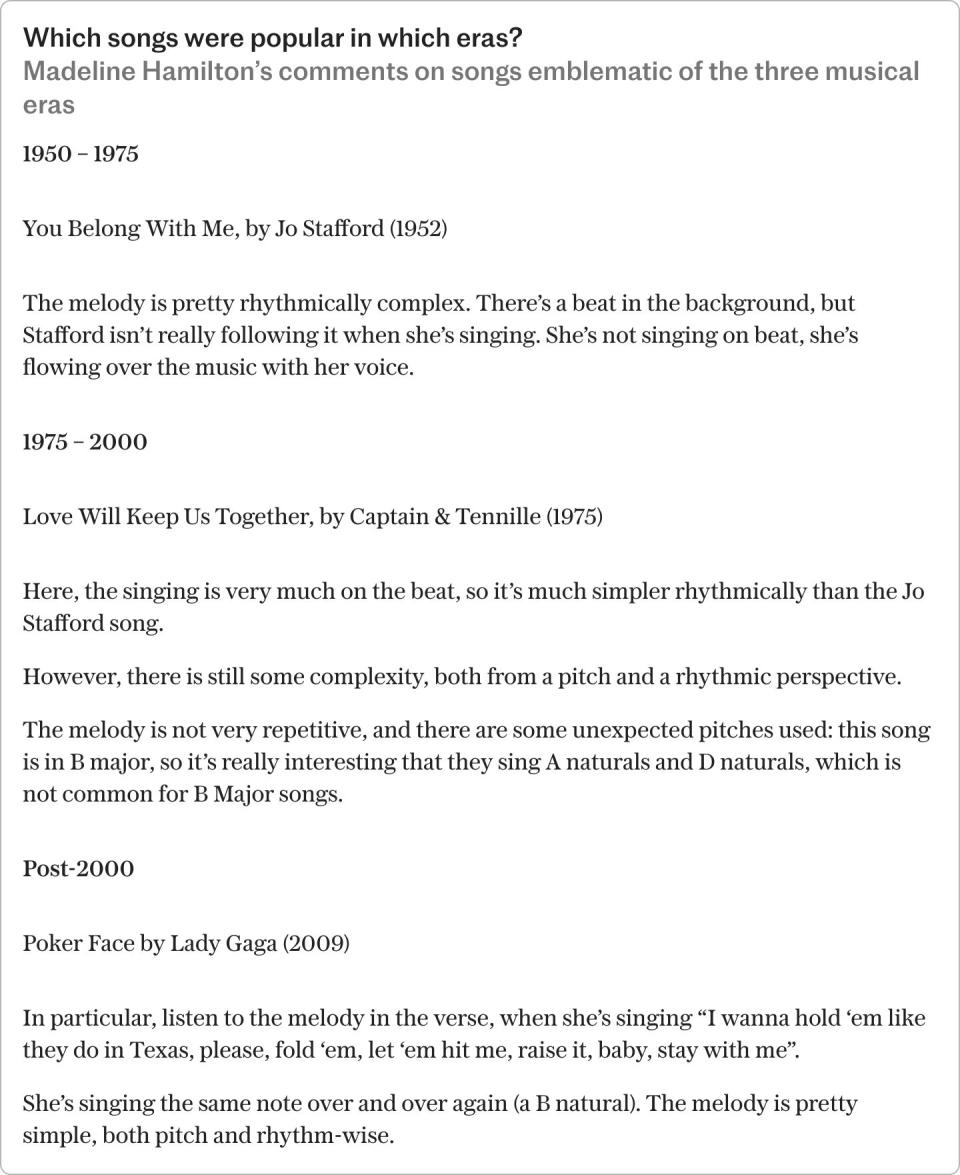Music has dumbed down in three stages since 1950, study finds

Modern songs are simpler now than in the 1950s thanks to three musical revolutions that have dumbed down melodies, a study has found.
Songs have undoubtedly changed from the Rat Pack era of Frank Sinatra through to the world-dominating fame of Taylor Swift, with several previous studies revealing an altered musical landscape.
Madeline Hamilton, a PhD student at Queen Mary University of London, has discovered that melodies have become less complex by around a third since 1950 and that, at the same time, the number of notes per second has almost doubled to around three.
Ms Hamilton investigated the melodies of every top five song for every calendar year from 1950 to 2023. She said the modern listener wants catchy songs and this necessitates a less complex melody.
“We’re not sure why melodic complexity is decreasing in the most popular songs,” she said. “We would need to conduct another scientific study to say for sure. The most probable theory is that complexity is leaving melody and going somewhere else in the song.
“So while the complexity of melodies may be decreasing, maybe the complexity of other aspects of the songs, like the chord progressions or sound textures, is increasing.”

Analysis of the melodies of more than 350 songs revealed a steep drop in the complexity of melodies in 1975, again in 1996, and once more in 2000.
The 1996 revolution is less extreme than the other two, data show, and was brought about by advancements in technology allowing for more loops to be integrated into songs. This mini-revolution has been dubbed the “DAW revolution” as it was facilitated by adoption of the digital audio workstation.
The post-war era of music, perhaps best exemplified by Beatlemania, ended in 1975, data show, when the “disco revolution” occurred.
“We can’t say for sure, but we speculate that the 1975 revolution may be due to the decline in popularity of Beatles-like rock ‘n’ roll and the rise of disco and stadium rock,” Ms Hamilton said.
You Belong With Me, by Jo Stafford, is a good example of a complex melody from this first era, she said, with the artist not singing on the beat.
An example of the second era, from 1975 to 2000, is Love Will Keep Us Together by Captain & Tennille, the music cognition expert said, as the singing is on beat but it still has some complexity thanks to the use of unexpected pitches and unusual rhythms.
The third era, from the turn of the millennium until today, is best exemplified by Poker Face, by the enigmatic Lady Gaga, which is a noughties hit with an on-beat melody with the same note used throughout.
“By the year 2000, hip-hop and rap were not only very popular, but had influenced other genres. Perhaps the third revolution would be called ‘the hip-hop revolution’.”
The three phases were permanent changes with a decline in melodic complexity, the study found, which reflects the constantly moving desires of listeners, but all moving in a consistent direction.
Ms Hamilton stressed that less complex did not necessarily mean more boring, adding that “there are many great songs with very simple melodies”.
“The most probable theory is that the revolutions occur because of sudden shifts in what genres of music are popular, with each new genre of music utilising simpler and simpler melodies,” she said.
“This doesn’t mean that newer genres are worse (that’s a subjective opinion that can’t be tested by a scientific study), it just means that newly popular genres generally feature simpler melodies.”
The study is published in the journal Scientific Reports.


 Yahoo News
Yahoo News 
